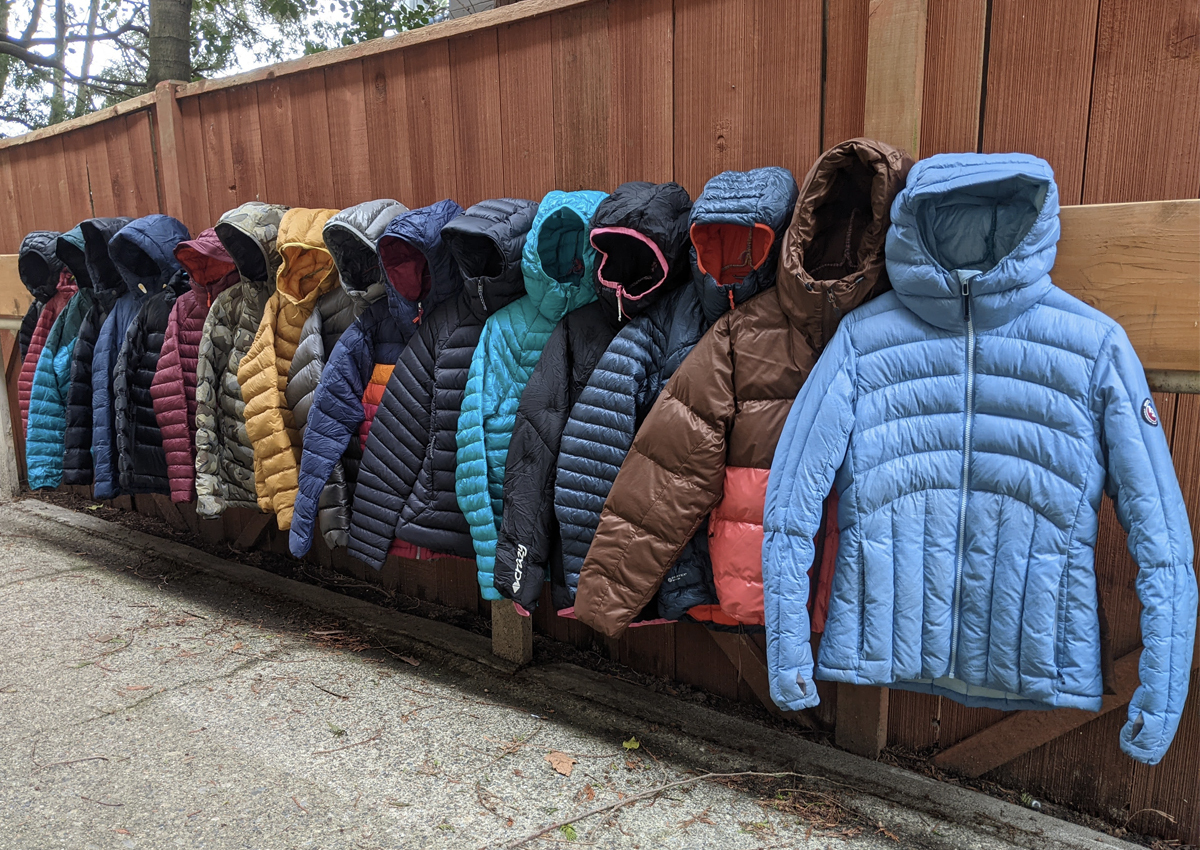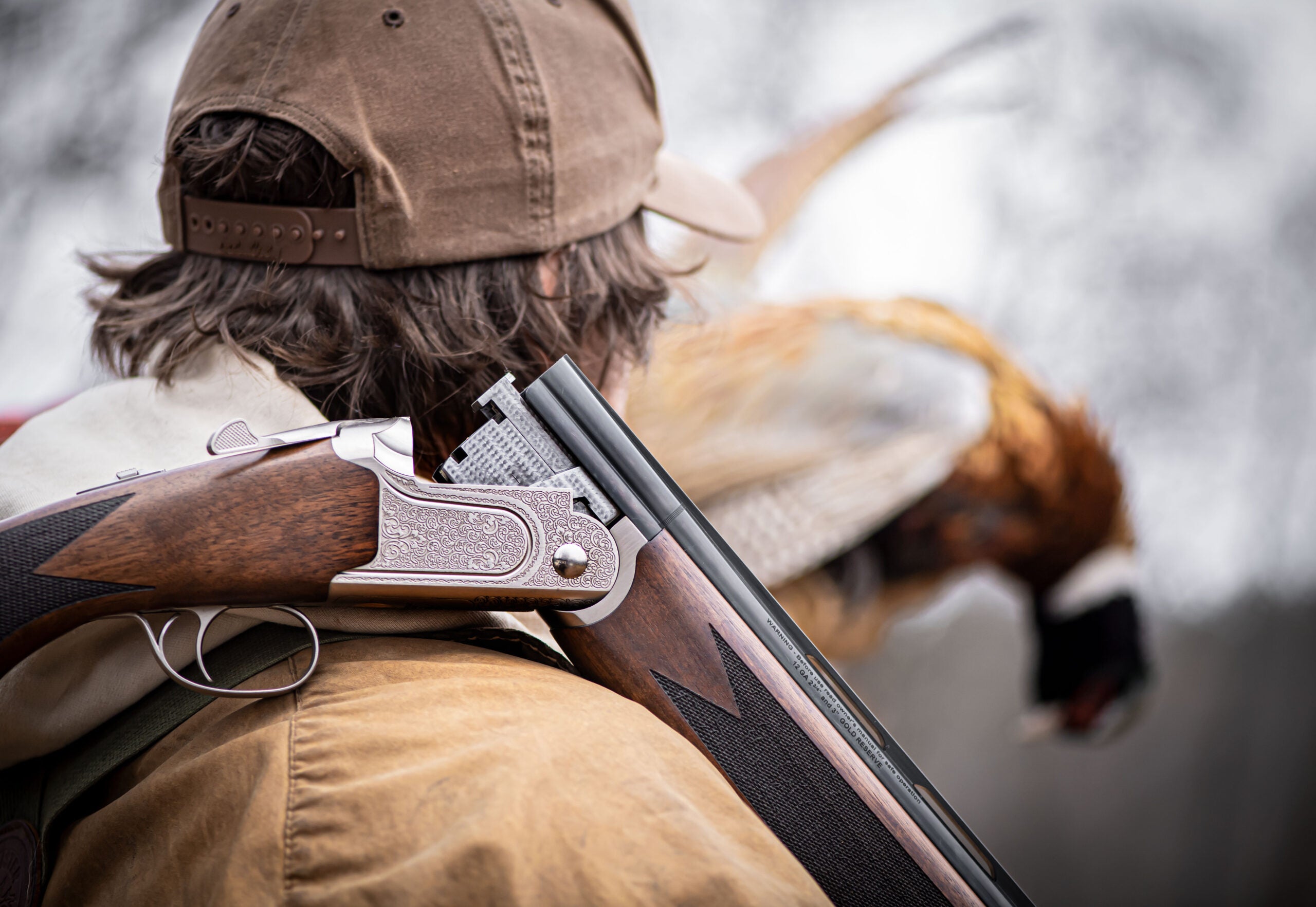We may earn revenue from the products available on this page and participate in affiliate programs. Learn More ›
A great down jacket is a game-changing piece of gear: light-as-air white fluff encased in a shell of lightweight nylon. The best down jackets keep you warm without weighing you down. But serious issues can arise when delicate stitching at the baffles and too-thin shells make these jackets prone to tearing. When left untreated, water can negate all of the down’s insulating properties. I tested 17 options from Marmot, Patagonia, Cotopaxi, Eddie Bauer, Outdoor Research, Arc’teryx, and more — the ones I have included here are the best down jackets.
How I Chose the Best Down Jackets
Down jackets are prized for their ability to keep you warm without weighing you down. For this story, I evaluated jackets on a number of criteria, including overall warmth, weight, water resistance, and durability. I also considered other factors such as price, warranty, and recycled material content, where applicable. More information about my hands-on testing and how grades for warmth, durability, and water resistance were determined can be found below in Testing the Best Down Jackets.
Best Down Jackets: Reviews & Recommendations
Best for Men: Stone Glacier Grumman Goose Down Jacket
See It
Report Card
- Warmth: Excellent
- Water Resistance: Excellent
- PFAS is currently in the DWR finish
- Durability: Great
Key Features
- Sizes: Men’s S to 3X
- Weight: 11.8 ounces (men’s S)
- Down Volume: 70 liters of loft potential (5.3 ounces at 850 fill power)
- Pockets: Two zip pockets at waist
- Warranty: Limited lifetime
Pros
- Very warm and comfortable
- Surprisingly durable
- Excellent weather resistance
Cons
- No women’s option available
- Heavier than other options I looked at
The Stone Glacier Grumman Goose Down Jacket checks all the boxes. Along with the Big Agnes Luna and Fjallraven Expedition Pack, it was one of the warmest jackets I looked at, while still being several ounces lighter. It also does an excellent job at keeping cold air from sneaking through the sides, with a light elastic around the cuffs that is comfortable and secure and an extra elastic section inside the hood that provides additional security. It was surprisingly water resistant, with no loss of loft detected when I submerged the cuff in water, and no water penetration detected when I left a quarter cup of water on the back of the jacket for two hours.
The 15D Pertex Quantum shell was exceptionally smooth and comfortable, but I was concerned that the thinness of the fabric wouldn’t stand up to the durability test. I was wrong. In the first test, involving shoving my arm into a thicket of blackberry brambles, it came out with just a few scrapes and no visible holes. The second test had me stacking increasingly heavy weights on the jacket and then dragging it across rough asphalt. At 10 pounds, the maximum in my test, the Stone Glacier Grumman Goose Down Jacket, was massively scraped up, but had no holes and no down escaping.
If you’ve been looking for a down jacket that can handle serious backcountry conditions, this one is a no-brainer. They also offer a version with a couple ounces less down if you’re looking for a more lightweight option for milder conditions. The only problem? At present, Stone Glacier does not offer a women’s version of this jacket, and the fit of this jacket at the hips and waist was not a match for this female tester’s fairly typical curves.
Best for Women: Big Agnes Luna
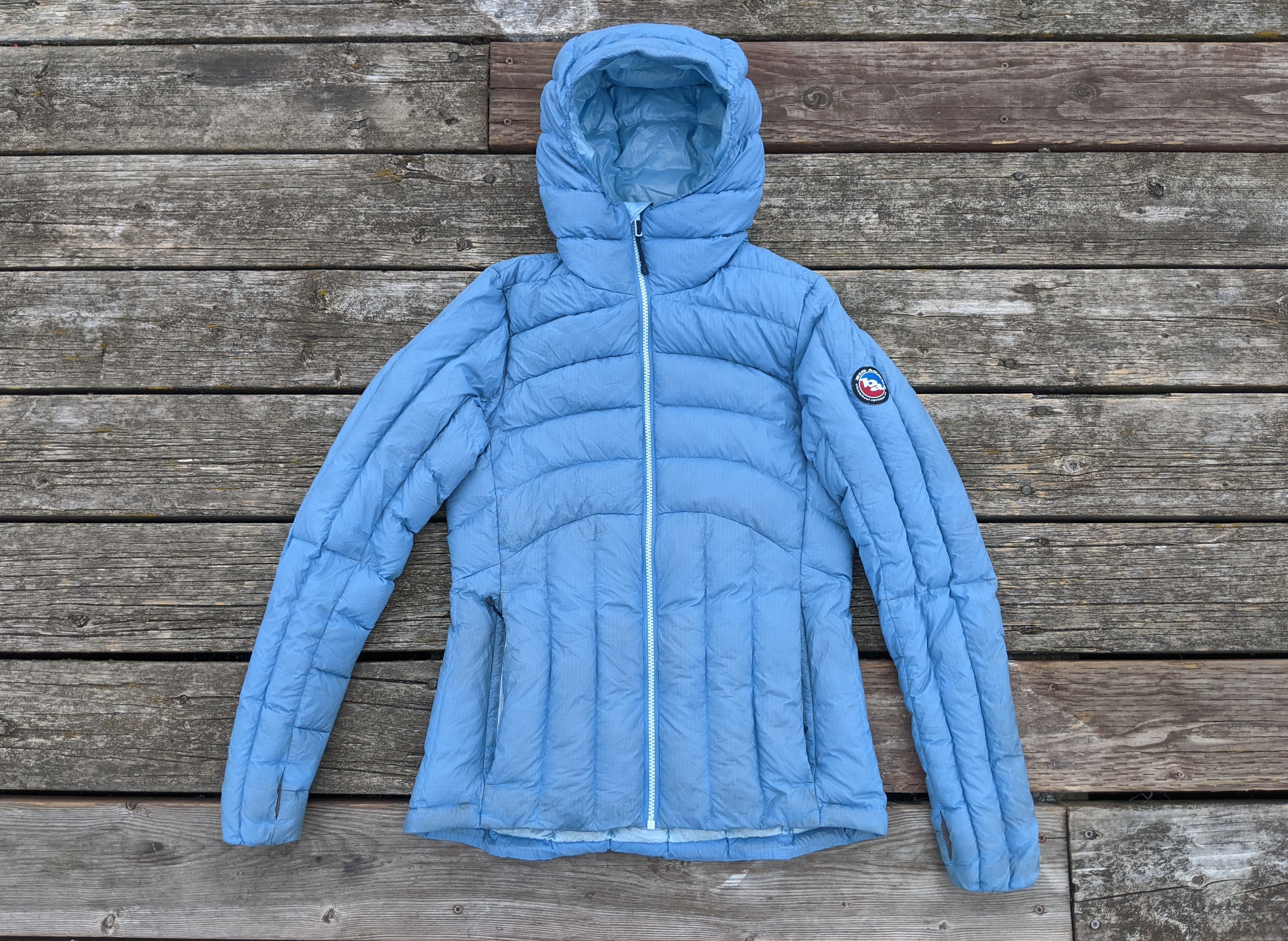
See It
Report Card
- Warmth: Excellent
- Water Resistance: Fair
- Durability: Great
Key Features
- Sizes: Women’s XS to XL (Men’s Shovelhead equivalent is available in XS to XXL)
- Weight: 13 ounces (women’s S)
- Down Volume: 65 liters of loft potential (6 ounces of 700 fill power)
- Pockets: Two zip pockets at the waist
- Warranty: Limited lifetime
Pros
- Affordably priced
- Great fit
- Very cozy
- Durable
- PFAS free
Cons
- Poor water resistance
- Heavier than other options I looked at
I’m a little salty that the Stone Glacier Grumman Goose Down Jacket isn’t offered in a woman’s fit (this is 2024), but no matter: We have the Big Agnes Luna. In testing, this jacket was just as warm as my best pick for men, and at a significantly lower cost. I especially appreciated the coverage provided by its hood and cowl — which makes such a difference on misty PNW days in the dead of winter — and the drop-tail hem. It also has a unique feature among down jackets that I’ve tested: thumbholes.
I’ve been wearing the same Big Agnes Luna jacket for over a year now, so I wasn’t surprised that it was one of my strongest performers in the durability test. While there were a couple of small puncture holes visible after it was subjected to the blackberry brambles (no down leaking, however), it looked great after being dragged across the pavement with weights on top of it. Some of the other down jackets I tested will need to be repaired before they can be worn again, but this one is headed right back into my regular rotation.
The only real ding here for the Big Agnes Luna is in water resistance. While the sheer amount of down will keep you plenty warm and dry in light rain, if heavier rain is in forecast it is extra important to pack a shell with this jacket.
Best Eco-Friendly: Marmot Guides Down Hoody
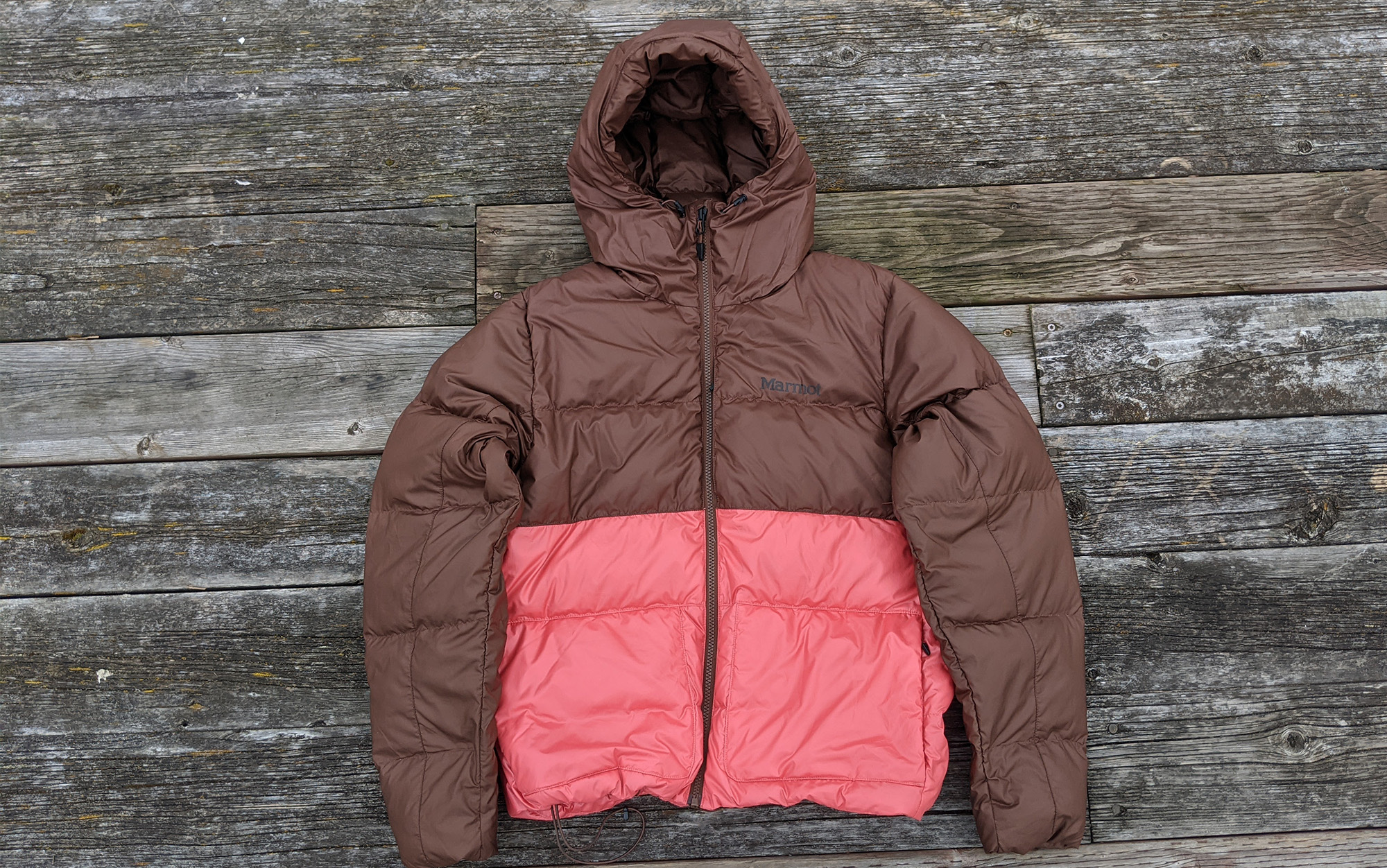
See It
Report Card
- Warmth: Excellent
- Water Resistance: Good
- Durability: Great
Key Features
- Sizes: Men’s S to XXL, women’s XS to XL
- Weight: 19.5 ounces (women’s S, tested); 21 ounces (manufacturer provided)
- Down Volume: 100 liters of loft potential (9.3 ounces at 700 fill power)
- Pockets: Two zip pockets at waist
- Warranty: Limited lifetime
Pros
- Very warm
- Uses a mix of recycled down and plant-based insulation
- Affordably priced
Cons
- Heavy
- Loose fit means air can sneak in easily
I’ll be honest, I struggled with this one. The Rab Microlight Alpine Jacket has far and away the best eco-friendly credentials: It’s made from 90 percent recycled materials (which is truly incredible). Rab is also exceptionally transparent about all of this, with a nutrition-label style information box that I wish the rest of the industry would duplicate.
But I can’t give the Rab Microlight Alpine Jacket the eco-friendly award because it’s not delivering on the warmth — surprising, since on paper its 5.1 ounces of 700 fill power down should have made it one of the warmest jackets in my test. I don’t have enough testing done to speak to whether recycled down is less insulative for its weight than virgin down, but regardless, Marmot solved this issue with their Guides jacket by just using a ridiculous amount of insulation: 9.3 ounces, 80 percent of which is recycled down and 20 percent of which is a plant-based down alternative made from the flower of kapok trees. It’s a very warm jacket. And like the Rab, this jacket is delivering on the recycled bonafides with a fully recycled shell and lining, along with zip pulls made from recycled material.
Unfortunately this one has some fit issues. Its fit is oddly loose around the middle — unless your midsection is on the thicker side, there are going to be major gaps where cold air can enter in through the bottom, even with copious layering. The cinch cord at the bottom hem helps a little with this, but also pulls the jacket up to closer to my waist than I typically like.
Best Lightweight: Kuiu Super Down LT Hooded Jacket

See It
Report Card
- Warmth: Great
- Water Resistance: Great
- Durability: Great
Key Features
- Sizes: Men’s S to 3X, women’s XS to XL
- Weight: 7.5 ounces (women’s S tested); 7 ounces (manufacturer provided)
- Down Volume: 34 liters of loft potential (2.6 ounces at 850 fill power)
- Pockets: Two zip pockets at waist
- Warranty: Limited lifetime
Pros
- Great warmth for weight
- Good durability and water resistance
Cons
- Strange crinkly sound
- The outer edge of the cuff holds onto water, which can be uncomfortable
I wasn’t expecting to find a better down jacket option for the lightweight backpacker and backpack hunter set than the Mountain Hardwear Ghost Whisperer, but the Kuiu SuperDown LT Hooded Jacket edged it out in several categories. While these jackets are similarly warm with similar water resistance, the Kuiu is less expensive and a touch lighter weight (think a few tenths of an ounce). More importantly: It is noticeably more durable.
During my durability test, I loaded up each jacket with 10 pounds of weight and dragged them across a rough pavement surface. The Mountain Hardwear Ghost Whisperer 2 was very scraped up at the end of this, with multiple holes and tears that would need patching. The Kuiu Super Down LT had one hole and a few minor scrapes that I’m not terribly concerned about.
The other part of that test involved checking to see how easily the sleeves would tear when they encountered blackberry brambles. The Mountain Hardwear Ghost Whisperer 2’s fabric caught very easily — it took some doing to disentangle the jacket — and ended up with two punctures. The Kuiu barely caught at all and was essentially unharmed on the other side of the test. I even ran this test twice on the Kuiu to check that I wasn’t imagining how easily the fabric slid past most of the thorns.
Oddly for a hunting brand, the Kuiu SuperDown LT was the only down jacket I tested that produced audible noise while testing. I’m not talking rain-jacket level of crinkle, but this isn’t a totally silent jacket.
Best Ultralight: Crazy Levity
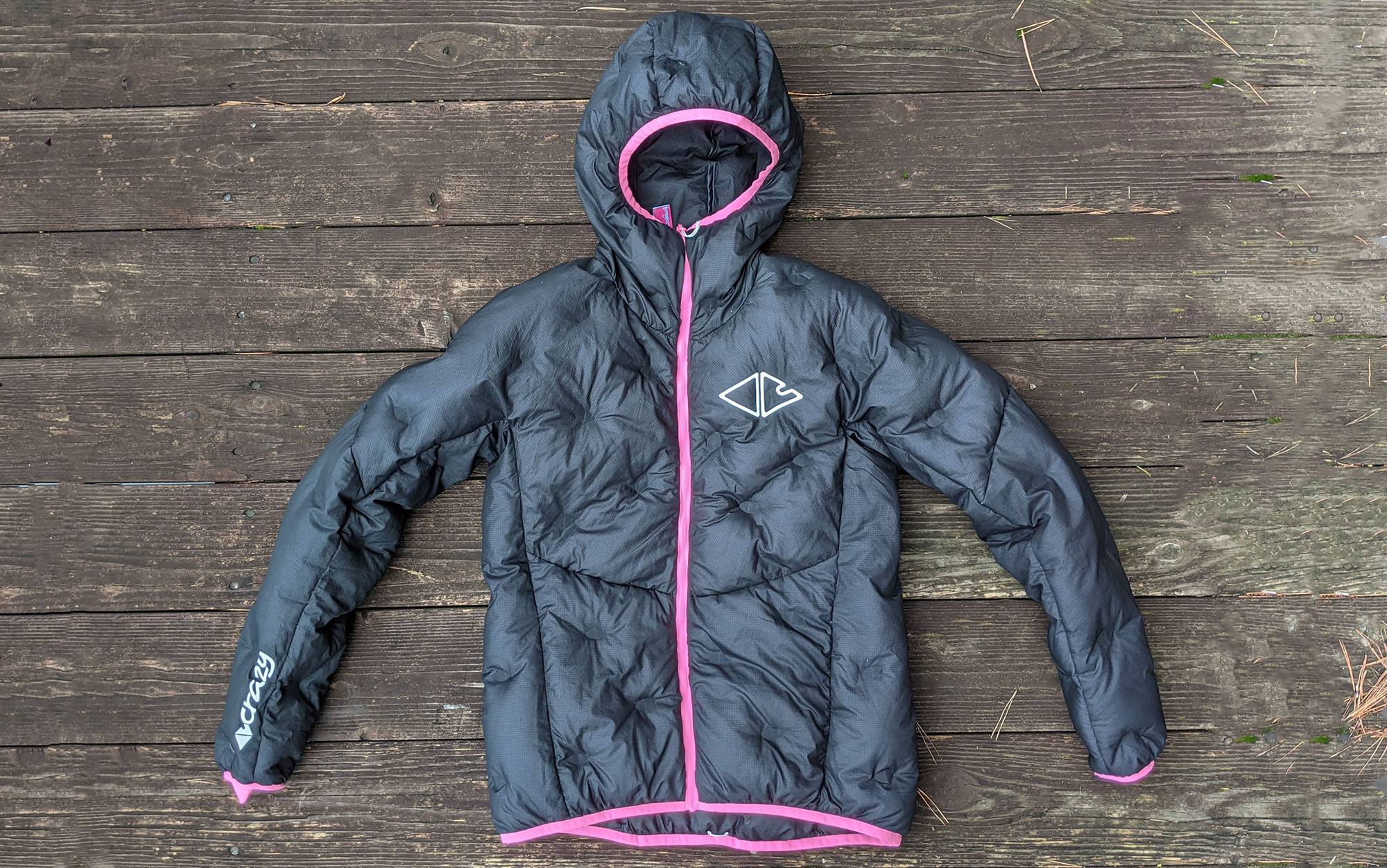
See It
Report Card
- Warmth: Great
- Water Resistance: Fair
- Unable to confirm whether PFAS was used in the jacket’s DWR treatment
- Durability: Fair
Key Features
- Sizes: Men’s S to XL, women’s XS to L
- Weight: 6.1 ounces (women’s S tested), 5.4 ounces (manufacturer provided)
- Down Volume: 35 liters of loft potential (2.4 ounces of 950 fill power)
- Pockets: Zip pocket at inside right waist
- Warranty: Lifetime warranty (with some exceptions)
Pros
- Lightest down jacket I looked at
- Good warranty
- Surprisingly warm
Cons
- Very expensive
- Not as durable as other picks on this list
- Few features like pockets or hem drawstrings, etc.
The warmth to weight of the Crazy Levity is off the charts. It weighs over an ounce less than its closest competitor (the Mountain Hardwear Ghost Whisperer 2) and was just as warm, if not warmer, than that jacket.
There are a couple of ways the Crazy Levity pulls off this impressive feat. The first is to simply use the highest grade down it can: 950 fill power to 1000 fill power. And it doesn’t skimp on it either. A full 2.4 ounces of the total 6.1 ounces of the jacket are down. Next is a unique approach to baffling. Rather than sew in traditional baffles, they have small ovals glued in at periodic intervals that helps to keep the down separated and evenly distributed. I’ve been wearing this jacket on a regular basis for months and have not noticed any cold spots as a result of unevenly distributed down, so I’d say it’s plenty effective.
The Crazy Levity also dispenses with anything resembling an extra. There is only one zip pocket on the jacket (inside at the right waist) and there are no drawcords or adjustment points to cinch the hem or the hood, just a touch of elastic to hold it in place. During testing, however, this felt like enough. I couldn’t feel the cold creeping in anywhere. The fabric is also not especially water repellent (despite being treated with DWR) and absorbed essentially all of the water during my test of water resistance (the jacket still lofted fine, however).
There was no jacket I was more worried about on the durability test than the Crazy Levity. The outer shell is made out of a wafer thin 7D nylon (the Mountain Hardwear Ghost Whisperer is made from a 10D fabric by comparison); I wondered if it was going to split open just by looking at the test, spilling all that premium down everywhere.
Fortunately, the reality was a little different. In the brush test, it didn’t particularly catch on any of the blackberry brambles, emerging with a few scrapes, but no visible holes. On the weighted test on pavement, it picked up two holes on the third weight, so I ended the test without moving up to the full ten pounds. While this is undoubtedly the worst performance in my test, it’s also a better performance than you have any right to expect from an ultralight puffer jacket with a 7D shell. Don’t take this one bushwhacking, but if it accidentally scrapes up against some Devil’s Club, it’ll probably be fine.
The real downside to the Crazy Levity is its price, which is hundreds of dollars more than anything else I looked at. That is somewhat ameliorated by the warranty, which is second only to Patagonia’s and Forloh’s. This one is a Satisfaction Guaranteed warranty, which means that, unlike limited lifetime warranties, there isn’t an arbitrary age of the garment at which point the warranty stops being in play. However, they do not cover improper care of the garment, including improper washing or drying, exposure to the sun, or contact with external agents, like scraping against rocks, snagging on your backpack, or in my case, being dragged along the pavement. Still, it’s a surprisingly good warranty given how delicate this down jacket is.
Most people will look at the Crazy Levity and decide (rightly) that it’s not for them. But if you’d pay almost anything to scrap a couple of ounces from your pack weight and are willing to baby your gear, it’s a must have.
Read the full review: Crazy Levity: Can a Super Ultralight Puffer Actually Keep You Warm?
Best Made in America: Forloh ThermoNeutral Down Jacket
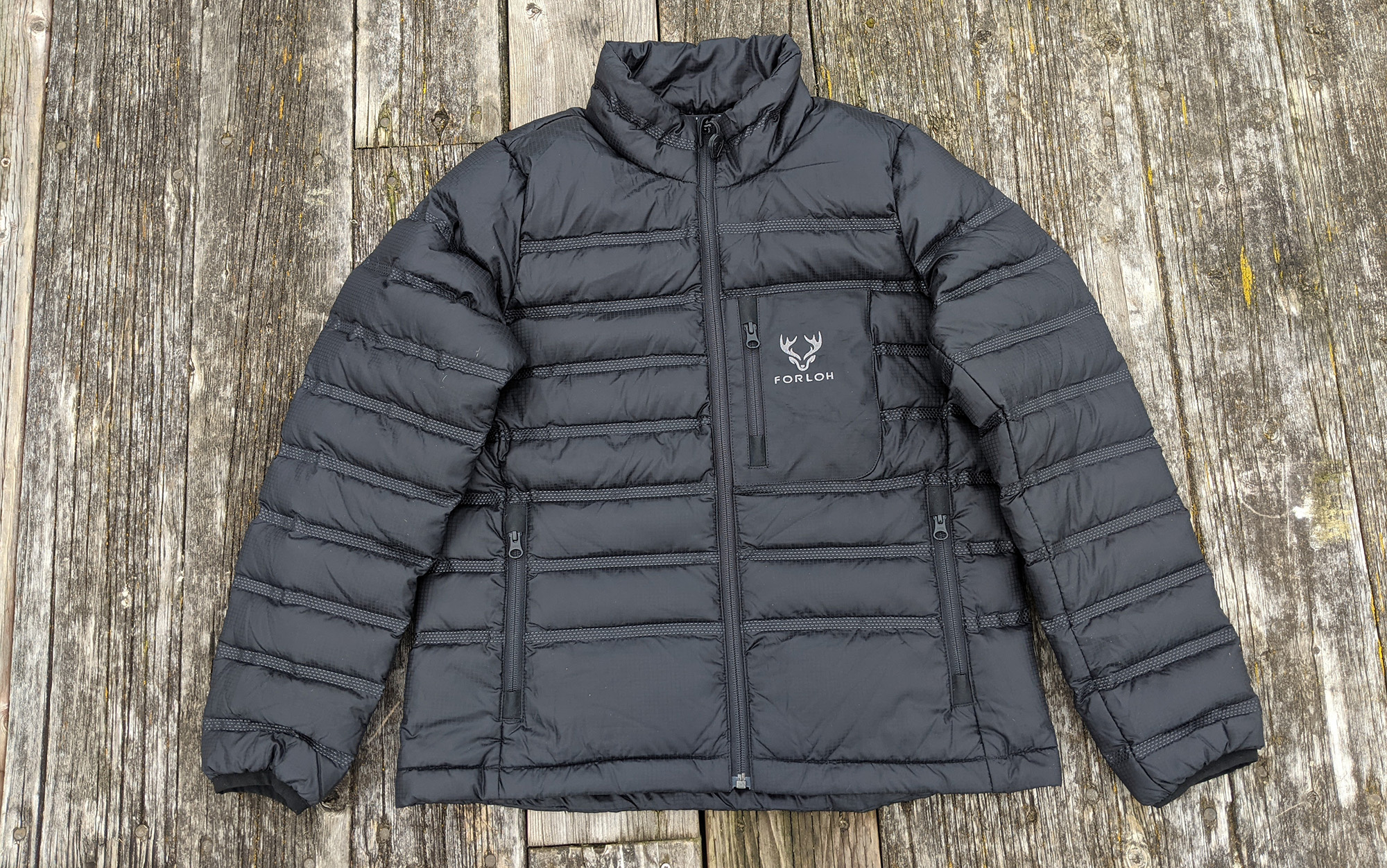
See It
Report Card
- Warmth: Good
- Water Resistance: Good
- PFAS is currently in the DWR finish
- Durability: Excellent
Key Features
- Sizes: Men’s S to 3X, women’s XS to XL
- Weight: 17.1 ounces (women’s S tested); 14 ounces (manufacturer provided)
- Down Volume: 43 liters of loft potential (4.3 ounces at 650 fill power)
- Pockets: Two zip pockets at waist, one zip pocket at left chest
- Warranty: Lifetime warranty
Pros
- Made in America
- Very durable
Cons
- No hooded option
- On the expensive side
- Heavy
The reality is that almost all outdoor gear is made overseas, plenty of it in China. So when I run across a brand that’s getting it done at a comparable price point while still being made in the USA, I’m impressed. Forloh takes that a step further by not just making the ThermoNeutral Down Jacket in America, but also sourcing all the materials from America, too — even the down, which is from Amish duck farmers in Indiana.
Unlike the wafer-thin Crazy Levity, the Forloh ThermoNeutral Down Jacket is made from a robust 40D ripstop nylon that meets military grade specifications and uses glue reinforced by ultrasonic acoustic vibrations (very futuristic sounding) instead of stitching to hold the baffles together. I was expecting this jacket to be one of the most durable options that I looked at, and it didn’t disappoint: After both tests, this jacket looked surprisingly close to untouched. Similarly, it kept water from soaking through over two hours on the water resistance test, although I was surprised that the cuffs did lose a little loft when submerged directly into water.
Almost all of the downsides of this down jacket have to do with fit. It’s surprisingly stiff and heavy compared to other jackets that I tested, and was less form-fitting than I expected. While the neck closure of the Forloh ThermoNeutral Down Jacket was effective at keeping cold air from sneaking, it’s hard to overstate just how much body heat is lost when there isn’t a hood, an option that Forloh does not currently offer.
Best Warranty: Patagonia Down Sweater Hoody
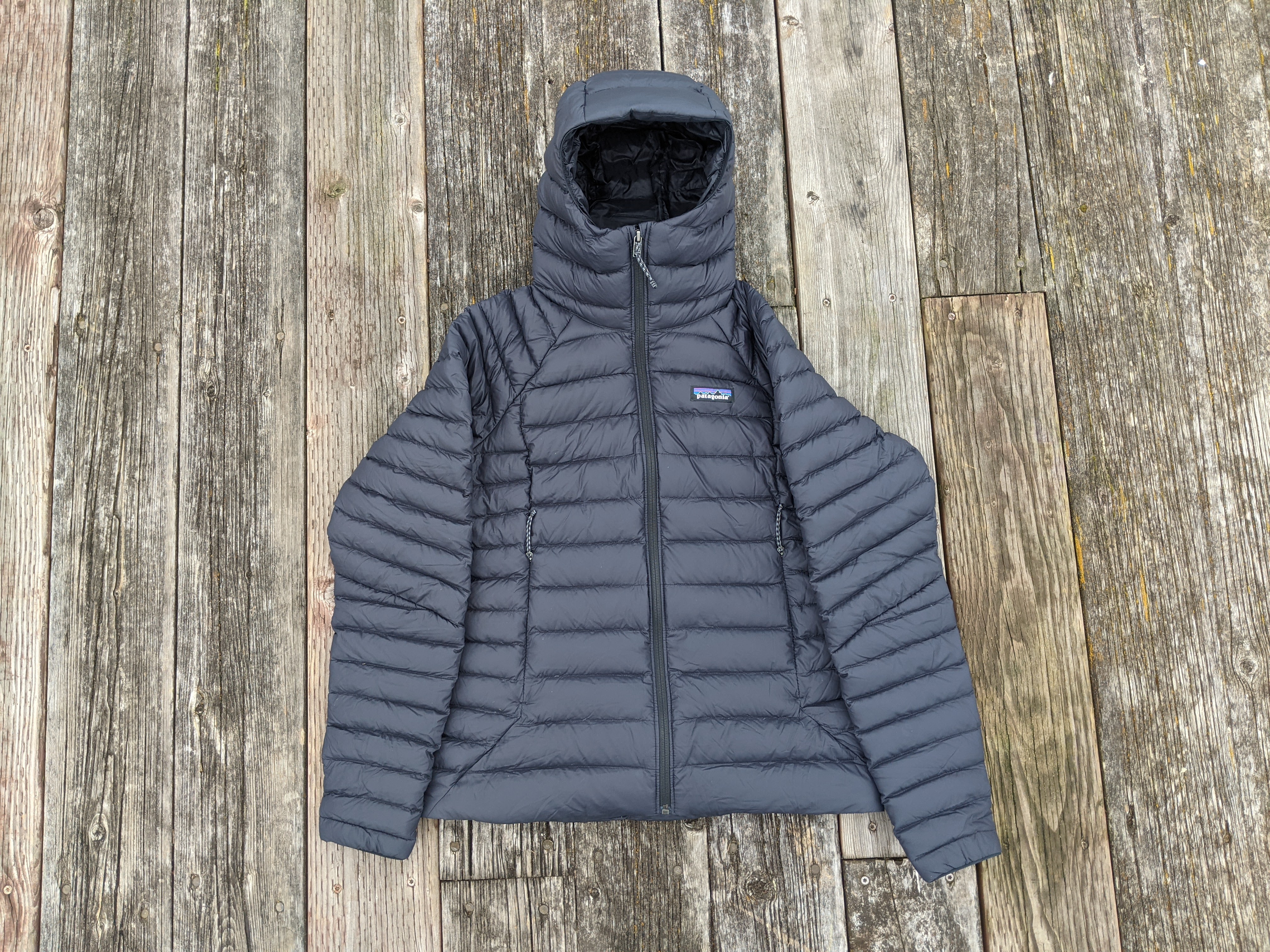
See It
Report Card
- Warmth: Great
- Water Resistance: Good
- Durability: Great
Key Features
- Sizes: Men’s XXS to 3X, women’s XXS to XXL
- Weight: 12.4 ounces (women’s S, tested); 12.1 ounces (manufacturer provided)
- Down Volume: Unknown
- Pockets: Two zip pockets at waist
- Warranty: Satisfaction guaranteed (lifetime warranty)
Pros
- Best-in-class warranty
- Great fit that enhances insulation
- Durable
Cons
- Not a stand-out performance in any category
- Not as warm as other picks on this list
If there is any down jacket on this list that has a reputation to live up to, it’s Patagonia’s Down Sweater Hoody. Where I live, in the Pacific Northwest, it’s one of most common pieces of outdoor apparel there is. So I was curious to see how it would stack up in testing.
Verdict: It’s fine. It was generally less water resistant than I was expecting, with an essentially new jacket seeing some water penetration through the seams when standing water was left on it for two hours and the outer edge of the cuff holding onto moisture when submerged in water. It picked up a small hole at the end of the durability test. And while the excellent fit of the hood and cowl helped to trap warmth while I was testing jackets in a walk-in refrigerator, a little cold air was sneaking in through the cuffs. If you’ve been struggling to find a puffer jacket that’s warm enough for your adventures, this isn’t it, but for typical conditions it will work just fine. Even its weight was on the middling side, with the jacket weighing a few ounces more than the Arc’teryx Cerium Hoody, which was marginally warmer.
Unfortunately, Patagonia declined to share the number of ounces of down fill their Patagonia Down Sweater contained (the only brand in my test to do so), so I was unable to calculate the down volume.
But if you’ve been looking for an excuse to purchase the Patagonia Down Sweater Hoody, here it is: It’s all about that warranty. Most manufacturers provide a limited lifetime warranty. That’s not your lifetime; it’s the lifetime of the jacket, and there isn’t a ton of transparency around what manufacturers think that should be. A better warranty (the best, really) is satisfaction guaranteed, which Patagonia calls their Ironclad Guarantee. If something goes wrong with your jacket, Patagonia will get you set straight. They’ll even repair your jacket (at a fee) if you do something ridiculous to it, like drag it across a parking lot with ten pounds of weight on top of it.
Best Budget: Eddie Bauer Stratustherm Down Jacket

See It
Report Card
- Warmth: Good
- Water Resistance: Great
- PFAS is currently in the DWR finish
- Durability: Excellent
Key Features
- Sizes: Men’s S to XXL, women’s XS to XXL
- Weight: 10.8 ounces (women’s S, tested); 11.8 ounces (manufacturer provided)
- Down Volume: 35 liters of loft potential (3.5 ounces at 650 fill power)
- Pockets: Two zip pockets at waist
- Warranty: One year
Pros
- Affordable
- Warmer than I was expecting
- Very durable
Cons
- Snap buttons are unnecessary and annoying to use
- Worst warranty in my test
- Fit wasn’t as good as some of the more expensive down jackets
I’ve tried my fair share of budget down jackets in the past, including the Decathlon Forclaz MT100 and the Uniqlo Ultra Light Down Parka. If you’re working up a sweat on a day hike, these are probably fine. If you’re waking up in the alpine to close to freezing conditions? Absolutely not. They just aren’t warm enough.
While the Eddie Bauer Straustherm Down Jacket wasn’t the warmest jacket I looked at, it got the job done in all categories. It’s warm enough, plenty water resistant, and was one of the most durable jackets I tested, with only a few scrapes on the back after being dragged across a parking lot with a 10-pound weight on its back.
Which is good, because this was the only jacket in my test that had only a one-year warranty on it. The other downside to this jacket is that the fit isn’t great. It’s not especially form fitting, and the hood (which is an important part of how this jacket was keeping warmth in) was a looser fit than others that I looked at. There also wasn’t any way to cinch the hem, which is a useful way to keep out cold gusts on windy days.
The Rest of the Field
Three down jackets more than impressed during testing, just missing out on earning an award. I’ve long been a fan of the Mountain Hardwear Ghost Whisperer 2, which is plenty lightweight for gram counters and warm enough for many alpine adventures. During testing, however, its durability just wasn’t there compared to the Kuiu SuperDown LT. It’s also a hair more expensive and a hair heavier. But if you find one on discount, it’s a great jacket that will serve you well.
One jacket that did not struggle with durability was the Arc’teryx Cerium Hoody. In fact, it did great in just about every test I threw at it. The downside, unfortunately, was price: It didn’t quite justify the weight and performance of this puffer jacket. Finally, I loved the Fjallraven Expedition Pack Down Hoodie, which doesn’t skimp on warmth while coming in at a great price point. But it was quite heavy compared to the Big Agnes Luna, and the fit wasn’t at the same level.
I checked out what is arguably the most popular down jacket — or at least the most recognizable — the Cotopaxi Fuego. While it performed perfectly fine in all my tests, it only impressed on durability, escaping that test with only scuffs. It repelled water in the cuff test, but a quarter cup of water soaked through the back when left to sit for two hours. It was reasonably warm in the walk-in fridge test, but not outstanding for its weight or price. If you like the colors (the colors are great), then the Cotopaxi Fuego is absolutely a serviceable choice, but if you have specific performance needs, other picks on this list will serve you better. I felt similarly about the Marmot Hype Down Jacket, which did fine in testing, but did not impress compared to similarly priced jackets.
If money is no object, then the Norrona Trollveggen Superlight Down is one to consider. It’s very lightweight and comfortable, if not especially warm. The fit was impressive. It uses a healthy amount of recycled materials. But even at its steep price point, it only offers a five-year warranty. Given this jacket’s poor performance on the durability test, that makes this one less of a sure investment than others I considered.
I really went back and forth with the eco-friendly award, as I was beyond impressed by Rab’s transparency in their use of recycled materials and what an impressive job they’ve done in eliminating PFAS from the two down jackets I tested. However, while their Microlight Alpine Jacket was made from 91 percent recycled materials, it just wasn’t that warm, especially for its weight. Their Mythic Alpine Light Jacket impressed more for weight to warmth (while still using a healthy percentage of recycled materials at 53 percent, but still wasn’t competing at the level of the Kuiu SuperDown LT, Crazy Levity, or Mountain Hardwear Ghost Whisperer.
Testing the Best Down Jackets
For my test of the best down jackets, I expanded on an earlier test I ran of the best packable down jackets. For this story, I chose to disregard the issue of packability and focus instead on warmth, weight, water resistance, and durability in my testing procedures. I also considered additional factors such as price, warranty, recycled materials, ethical treatment of animals, and use of PFAS.
Water Resistance
To test water resistance, I poured a quarter a cup of water over the back baffling of each jacket and then let it sit for two hours. I also tested the cuffs of each down jacket (a common fail point) for water resistance. First, I sprayed them with water from a spray bottle (mimicking the high humidity and mist that can be prevalent in popular backpacking locales), and let them sit for an hour. I then dipped them into a container of water for five seconds to see how easily (or if) they wetted out. The results of these three tests were combined to provide an overall picture of how well the down jackets resisted water.
Excellent water resistance means that the down jacket completely resisted water absorption during my test (although I would not take that to mean they are waterproof) while fair notes instances where the water soaked either into the insulation of the jacket or completely through to the other side of the puffer.
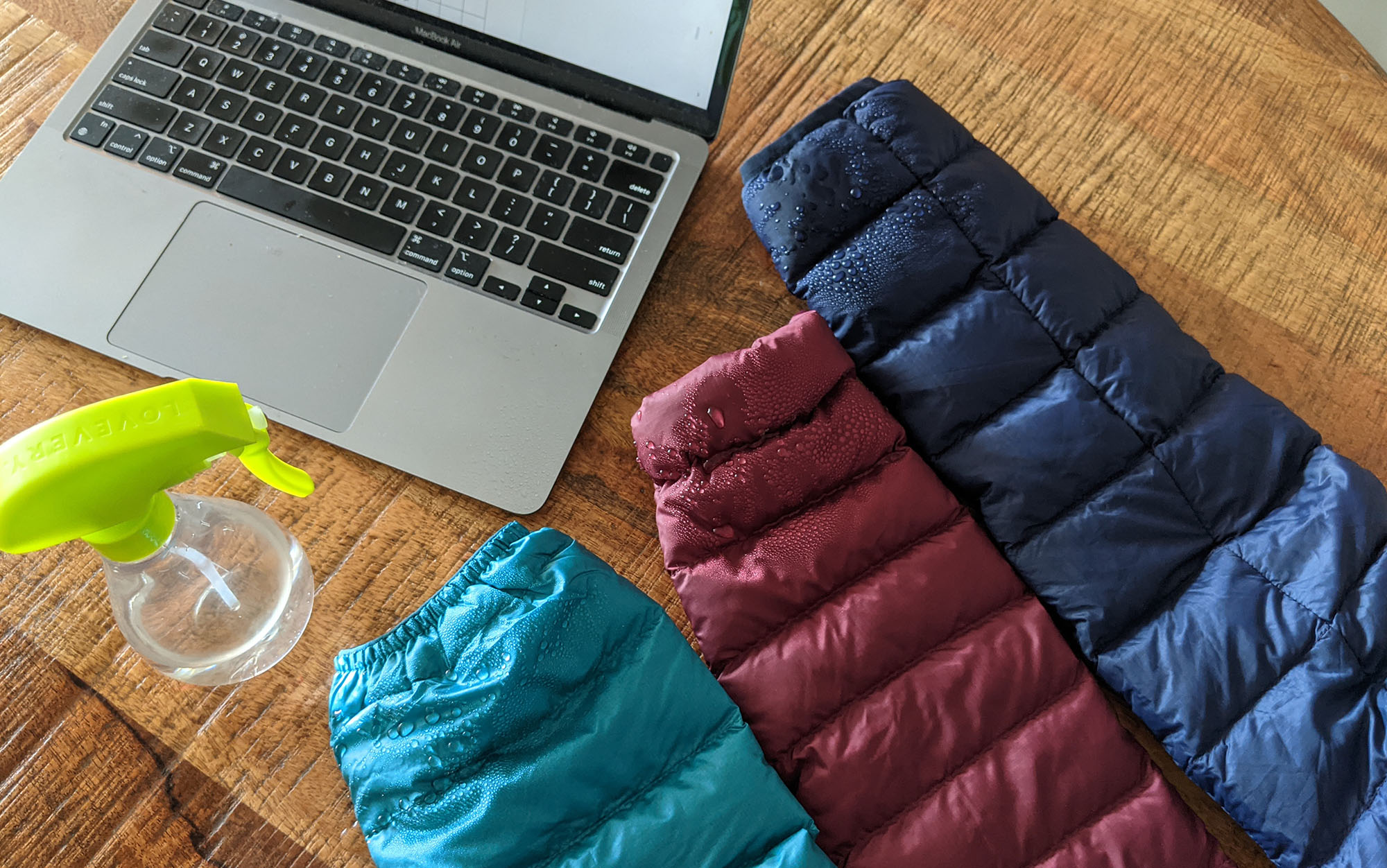
Warmth
Overall warmth was tested using a walk-in refrigerator. While I considered running a test outdoors for this test (it was February after all), I found that over the course of 17 down jackets, ensuring comparable conditions was too much of a challenge. The sun would peak out behind a cloud for a few minutes warming things up, or the wind would pick up unexpectedly, affecting how warm or cold I was more than the relative merits of 800 fill power down versus 850 fill power down. The walk-in refrigerator, however, provided fairly static conditions at even air flow and low humidity. Plus, it was easy to tell if the temperature had shifted a degree or two and work that into the warmth assessment.

Overall warmth was judged to be excellent if at the end of my testing period in the walk-in cooler I felt comfortable enough to stay there indefinitely while fair packable puffers indicate instances where my teeth were starting to chatter. While considering the comparative warmth between down jackets, I also considered how much coverage was provided by the hood, as well as the functionality of drawcords at the hem and elastic at the cuffs.
Durability
Compared to the best rain jackets or the best base layers, down jackets are relatively fragile. The down is typically encased in nothing more than a thin nylon shell, sewn together with delicate baffles. Catching a corner of some down jackets on a piece of bramble can result in a tear; others will be unaffected. To test the durability of the best down jackets, I ran two tests. To approximate the snags that can sometimes shred down jackets, I balled my hand into the sleeve of each and shoved my arm into a thicket of blackberry brambles. Some of the jackets got pretty stuck in there, and I had to manually unhook a few thorns to get them back out. Others barely caught at all and I was able to easily pull my arm out.


My second test looked at more general abrasion resistance, such as you might encounter if you slipped and fell on a rough surface. For this test, I grabbed four 2.5-pound weights and found a parking lot with a rougher asphalt surface. I placed each jacket on its back with one of the weights on it, and then dragged it about five feet. If it survived without noticeable damage I added another weight. Again, a few of the jackets survived this test with nary a scratch while others ended up with multiple spots where down was pouring out.
Weight and Down Weight
Weight was independently measured to confirm manufacturer specifications. Because of the nature of down there will be some variability in weight between products; however, in instances where there was more than a half ounce discrepancy, I listed both my weight measurement and the one provided by the manufacturer.
In addition to checking the down fill power for each jacket, I also queried each manufacturer about the number of ounces of down in each jacket. Down fill power (fp) refers to the number of cubic inches of loft 30 grams (1.05822 ounce) of down can achieve. Down that fills 800 cubic inches is 800fp, while down that only fills 600 cubic inches is 600fp. But fill power only tells you half the story: If you have three ounces of 600fp down, you’ll end up with 1700 cubic inches of loft. If you have two ounces of 800 fill power, you’ll only end up with 1510 cubic inches.
A better measure of purported warmth of a jacket would be Down Volume: Fill Power x Weight. While one manufacturer (Patagonia) declined to share the weight of the down they use in their jackets for this story, I’ve included that information for the rest of the down jackets in this test. Keep in mind, however, that a jacket’s construction will play a major role in how effectively the down is used. Not enough down, and there will be cold spots in the baffles. Too much, and the down won’t have enough room to loft to its full potential.
Performance
| Down Jacket | Price | Down Fill Power (fp) | Down Weight | Down Volume | Weight | Water Resistance | Durability | Overall Warmth |
| Arc’teryx Cerium Hoody | $400 | 850fp | N/A | N/A | 10.2 ounces | Great | Great | Great |
| Big Agnes Luna | $270 | 700fp | 6 ounces | 65 liters | 13 ounces | Fair | Great | Excellent |
| Cotopaxi Fuego Down Hooded Jacket | $300 | 800fp | N/A | N/A | 11.7 ounces | Good | Great | Good |
| Crazy Levity | $650 | 950fp | 2.4 ounces | 35 liters | 6.1 ounces | Fair | Fair | Great |
| Eddie Bauer Stratustherm Down Jacket | $150 | 650fp | 3.5 ounces | 35 liters | 10.8 ounces | Great | Excellent | Good |
| Fjallraven Expedition Pack Down Hoodie | $275 | 700fp | 3.5 ounces | 38 liters | 17.8 ounces | Good | Good | Excellent |
| Forloh ThermoNeutral Down Jacket | $400 | 650fp | 4.3 ounces | 43 liters | 17.1 ounces | Good | Excellent | Good |
| Kuiu Super Down LT Hooded Jacket | $320 | 850fp | 2.6 ounces | 34 liters | 7 ounces | Great | Great | Great |
| Marmot Guides Down Hoody | $275 | 700fp | 9.3 ounces | 100 liters | 19.5 ounces | Good | Great | Excellent |
| Marmot Hype Down Hoody | $300 | 800fp | 3 ounces | 37 liters | 9.2 ounces | Good | Good | Good |
| Mountain Hardwear Ghost Whisperer 2 Hoody | $360 | 800fp | 2.9 ounces | 36 liters | 7.8 ounces | Great | Poor | Great |
| Norrona Trollveggen Superlight Down Hood | $430 | 850fp | 2.5 ounces | 33 liters | 7.3 ounces | Great | Poor | Good |
| Outdoor Research Helium Down Hoodie | $300 | 800fp | 2.6 ounces | 32 liters | 15.4 ounces | Excellent | Great | Fair |
| Patagonia Down Sweater Hoody | $330 | 800fp | N/A | N/A | 12.1 ounces | Good | Great | Great |
| Rab Microlight Alpine Jacket | $300 | 700fp | 5.1 ounces | 55 liters | 14.6 ounces | Fair | Great | Fair |
| Rab Mythic Alpine Light Jacket | $390 | 900fp | 2.1 ounces | 29 liters | 8 ounces | Excellent | Great | Good |
| Stone Glacier Grumman Goose Down Jacket | $350 | 850fp | 5.3 ounces | 70 liters | 11.8 ounces | Excellent | Great | Excellent |
How Water Resistance Testing May Change in the Future
While I have included the results of the water resistance testing in the above table, consumers should know that upcoming legislation may change the performance of some of the best down jackets. California issued Assembly Bill No. 2771 in 2022, which will prohibit the sale of textiles including intentionally added PFAS starting in 2025, and other states, including Washington and Colorado are enacting similar bans that will impact outdoor apparel. While PFAS is most commonly associated with non-stick cookware (think Teflon), it is also used to provide water resistance, as well as additional durability and stain resistance, in outdoor gear. For down jackets, PFAS is sometimes found in the washes used to make the down itself water resistant, as well as the durable water resistant (DWR) coating on the outside of the jackets.
I queried manufacturers as to where there is currently PFAS in their garments, and have supplied that information below. This turned out to be a fairly complicated question, as PFAS turned up in several parts of apparel that manufacturers don’t directly make, such as the coating used on their zippers. Several indicated their commitment to entirely eliminating PFAS from their apparel lines by fall, but few had yet achieved that status.
If you own gear that contains PFAS, there is no reason to discard it. PFAS increases your risk of cancer when ingested, but there is no indication that it passes the skin barrier readily enough to pose a risk. However, its ubiquity in consumer goods and its status as a “forever” chemical (so called because they can build up in both the environment and the human body) means that several states where it is now banned have seen it show up in unsafe levels in local drinking water supplies. There are also substantial risks faced by the people in the factories where these jackets are manufactured.
Other Considerations
I also considered several other ethical and environmental factors, including the amount of recycled content in each jacket and whether it was Responsible Down Standard certified. RDS states that force-feeding and live-plucking is prohibited. I also considered the provided warranty (most were quite impressive) and its impact on the overall value of each down jacket.
Corporate Responsibility
| Down Jacket | Price | Warranty | Recycled Content | Down Certification | PFAS Free? |
| Arc’teryx Cerium Hoody | $400 | Limited Lifetime | Shell fabric only | RDS | No, in progress for Fall 2024 |
| Big Agnes Luna | $270 | Limited Lifetime | Shell and lining fabric only | RDS | Yes |
| Cotopaxi Fuego Down Hooded Jacket | $300 | Limited Lifetime | None | RDS | Yes |
| Crazy Levity | $650 | Satisfaction Guaranteed | N/A | Downpass | N/A |
| Eddie Bauer Stratustherm Down Jacket | $150 | 1 Year | Shell and lining fabric only | RDS | No (DWR coating), in progress for Summer 2024 |
| Fjallraven Expedition Pack Down Hoodie | $275 | Limited Lifetime | Lining fabric only | Internal verification | No (zippers only), in progress for Fall 2024 |
| Forloh ThermoNeutral Down Jacket | $400 | Lifetime Warranty | None | RDS | No (DWR coating) |
| Kuiu Super Down LT Hooded Jacket | $320 | Limited Lifetime | None | RDS | No, in progress for 2025 |
| Marmot Guides Down Hoody | $275 | Limited Lifetime | Shell and lining fabric, zipper pulls, down fill | Recycled | Yes |
| Marmot Hype Down Hoody | $300 | Limited Lifetime | Shell and lining fabric, zipper pulls | RDS | Yes |
| Mountain Hardwear Ghost Whisperer 2 Hoody | $360 | Limited Lifetime | Shell and lining fabric only | RDS | No (zippers only), in progress for Winter 2024 |
| Norrona Trollveggen Superlight Down Hood | $430 | 5 years | Shell fabric only | RDS | Yes |
| Outdoor Research Helium Down Hoodie | $300 | Limited Lifetime | 41% of the lining | RDS | Yes |
| Patagonia Down Sweater Hoody | $330 | Satisfaction Guaranteed | Shell and lining fabric only | RDS | Not in the DWR coating |
| Rab Microlight Alpine Jacket | $300 | Limited Lifetime | 91 percent of jacket | RDS | No (zippers only), in progress for Winter 2024 |
| Rab Mythic Alpine Light Jacket | $390 | Limited Lifetime | 53 percent of jacket | RDS | No (zippers only), in progress for Winter 2024 |
| Stone Glacier Grumman Goose Down Jacket | $350 | Limited Lifetime | None | RDS | No, (DWR coating), in progress for 2025 |
Things to Consider Before Buying a Down Jacket
Fill Power and Fill Weight of Down versus Feathers
It’s become increasingly popular to advertise the fill power used in the best packable down jackets. But what is fill power? Fill power refers to the total volume taken up by an ounce of fully lofted down at various grades. Higher grade down can capture more warm air than lower grade down, and so will take up more volume. An ounce of 450 fill power down takes up 450 cubic inches. An ounce of 900 fill power down takes up 900 cubic inches. There are huge weight savings that come with using higher grade down, but at a higher cost.
Less often advertised, but still important, is the fill weight: That’s how much of that down is actually in the packable down jacket. (See our table above for information on the fill weights of different packable puffer jackets). Even if a jacket is using 900 fill power down, if it’s not using very much of it, it will only be so warm. Conversely, a down puffer jacket stuffed to the brim with 550 fill power down may be quite warm.
But even if you know both of these metrics, you still don’t have the full picture of warmth. The design and distribution of down across a jacket can affect warmth. The potential for cold spots — areas the down has shifted away from — can also affect your experience. Features like drawstrings at the hem as well as the hood and cuff design can allow or prevent cold air from creeping in. Finally, if down is packed in too tightly, it can prevent it from fully lofting, diminishing the warmth potential of the weight and fill power grade.
Chris Curtis, senior product manager for outerwear at Mountain Hardwear explained another complicating factor: The blend of feathers to down can vary considerably when purchasing bulk down. “800 fill power down insulation could be a mix of 95 percent down plumules and 5 percent feather, or 90 and 10 percent or 85 and 15 percent,” he said. “But since the heat trapping properties of the down plumules is greater than the feathers, the 95/5 blend is statistically warmer than the 85/15, even if both are 800 fill power.” While brands can specify a certain blend, sometimes that blend simply isn’t available, and they will compensate by adjusting how much fill is used in different parts of the puffer coat.
RDS Certification
While most down is a byproduct of the food industry, its popularity as an insulation material has led to unethical practices in the past: namely, live plucking and force feeding of geese. Because down is in virtually all cases sourced from a third-party supplier, it can make it difficult for manufacturers to independently verify that animals were treated humanely in the harvesting of goose and duck down. Responsible Down Standard (RDS) is a certification that verifies that there was third-party verification that all animals were treated humanely in the creation of a down garment.
While RDS is the main certification for down garments, there are a couple of others that are common as well, including Global Traceable Down and Downpass.
Shell Material
Most packable down jackets are made with a nylon shell and DWR finish. The shells typically are made in varying thickness measured in denier (D). Usually these range from 10D to 30D.
Pertex is also a common type of nylon used for packable down jacket shells, which provides an extra degree of protection from water.
Water Resistance
While down jackets and down coats have a reputation for losing their effectiveness in wet conditions, my tests showed that today’s breed of down jackets, complete with DWR treatments on the shell and hydrophobic treatments on the down itself, are actually quite effective at repelling light rains. However, these treatments will wear off over time. If you frequently wear your down jacket out without a shell cover, plan to refresh the water repellency on a regular basis with products like Nikwax’s hydrophobic down treatment.
Hood Coverage
In my opinion, the best down jackets will have hoods, but the amount of coverage provided by each hood varies considerably. If you plan to use your down jacket as a standalone piece (i.e. without a balaclava or scarf) then check that it provides sufficient coverage of your head and face.
FAQs
Down jackets use down, the innermost layer of feathers on duck and geese, for insulation, while puffer jackets may use down insulation, synthetic insulation, or a mixture of both.
Down has the greatest warmth for weight potential of any insulation material. However, how much warmth is being provided depends on the quality of the down (measured in fill power) and the amount of that down that is being used. Generally, the less puffy a down jacket is, the less warm it will be.
How heavy your down jacket should be depends on how cold your local temperatures are and what you plan to do. If you plan to stand around in subfreezing conditions you’ll need a down jacket with a higher fill volume than if you’ll be actively hiking in the spring months.
You can check the relative warmth of many best-in-class down jackets by reviewing our table, which shows the results of side-by-side testing. Generally, “fair” ratings should be saved for cool summer evenings, while good and great rated jackets can be worn into the shoulder season months. Down jackets rated excellent are those that I would wear in below-freezing conditions.
While down jackets are not fully waterproof, they are quite water resistant. Look for down coats that advertise DWR treatments and hydrophobic fills: These can handle short spurts in light rain.
You can wash down jackets, but to protect the down for the long-term it is important to use detergents created specifically for down, like those from Nikwax.
Yes, all down jackets will lose a feather from time to time. This is normal and to be expected. Try to not pull on them when you see them as that can inadvertently result in holes in your down jackets.
Final Thoughts
The best down jackets can keep you warm from the chill of early spring through the deep freeze of winter. After testing 17 different down jackets, these eight came out on top for warmth, water resistance, and durability.
Read the full article here

